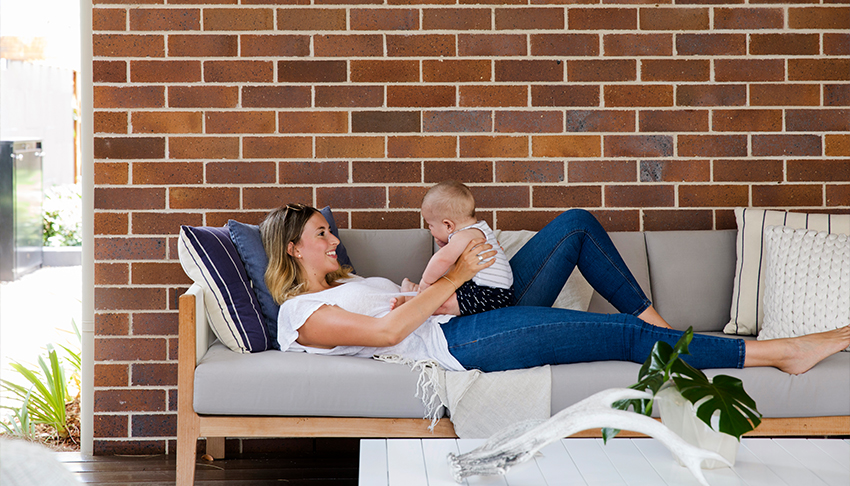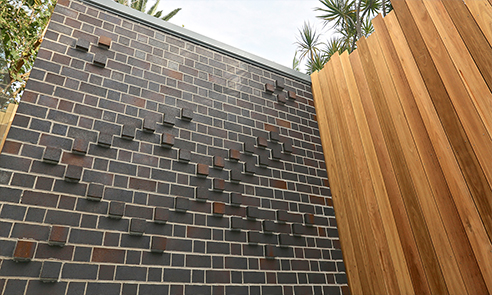1. RESEARCH THE STYLE OF THE HOUSE
The material that your house is built from also forms the foundation (literally) of its aesthetic appeal. The colour, shape, size and texture of the bricks you choose will influence the overall look and feel of your house. Before you make your final decision, it’s worth gathering ideas from the internet, display homes, selection centres and magazines. When renovating, consider how new bricks will appear alongside existing materials.
Many homeowners find it helpful to pull together a “mood board” of images in the styles of homes they are drawn to. Simply save images (either physically or digitally) of your favourite buildings, bricks, trims and even interior ideas. As your mood board develops, it will often become apparent which style of home best suits your aesthetic and lifestyle.
Different aesthetic to your partner? Try having both of you complete the PGH Bricks Style Quiz to get a better understanding of your individual preferences, to find common ground and choose a style that you are both happy with.

2. CONSIDER YOUR LOCATION
Bricks are graded to suit different environmental conditions. The location of your home will determine which grade you need. If you live near the coast or have high-saline soil, you may benefit from exposure grade bricks (EXP)*, which have heightened resistance to salt attack. General purpose (GP) grade bricks are suited to all other building types and locations. Talk to your builder about any special environmental conditions you should be aware of.
*EXP bricks are ideal for homes located up to one kilometre from a surf coast or 100 metres from a non-surf coast.

COLOUR AND TEXTURE
3. HOW DOES IT LOOK?
Textural elements can add character, charm and individuality to a home. Brick textures range from a smooth finish, which has a consistent surface and ceramic-like appearance with straight edges, to a more artisan-style of effect, with a dragged or ripped appearance for a weathered look.
Try beautiful Crafted Sandstock bricks for an authentic raw beauty that no other material can achieve or, if you are interested in a contemporary style, explore the metallic finishes available. To get an indicative feel for the look of your selection, visit PGH Visualiser to visualise your dream home online or a selection centre to see your finishes in real life.

SIZE
3. HOW DOES IT LOOK?
Bricks are available in a range of dimensions, including standard sizes, split, double height, linear and super linear. Choosing the right size for your project may depend on different factors, such as the proportions of the house, the style of your exterior and the purpose of the bricks.

4. HOW DOES IT STACK?
A bond pattern is the style in which the bricks are layered. The most common bond is the stretcher bond, which consists of full bricks offset by half a brick from one row to another.
Stacked and Flemish bonds are also popular and achieve an alternative look, or get creative with hit-and-miss brickwork (especially popular for screening), which allows natural light to shine through.

Mortar Colours
5. WHAT HOLDS IT TOGETHER
Mortar is the material that binds bricks together and it can have a striking impact on the look of your facade. For example, an off-white mortar between darker coloured bricks will add contrast and highlight the shape of each brick, making the bricks the hero. However, matching the colour of the mortar with that of the brick will soften the brickwork and present a unified appearance. This is especially common with the use of lighter shades of bricks. Common mortar colours include natural or grey; white or off white; cream or buff.

MORTAR JOINT FINISH
5. WHAT HOLDS IT TOGETHER
With the mortar joint, you can choose round ironed, flush, raked or struck finish, depending on whether you want to highlight or soften the brickwork. For instance, create contrast and shadowing with a raked joint or minimise shadowing with a flush joint.






